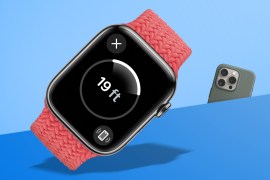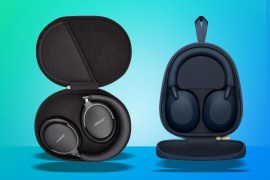Samsung Galaxy S22 vs S22+ vs S22 Ultra: the three phones compared
What are the differences between Samsung’s latest Galaxy handsets?
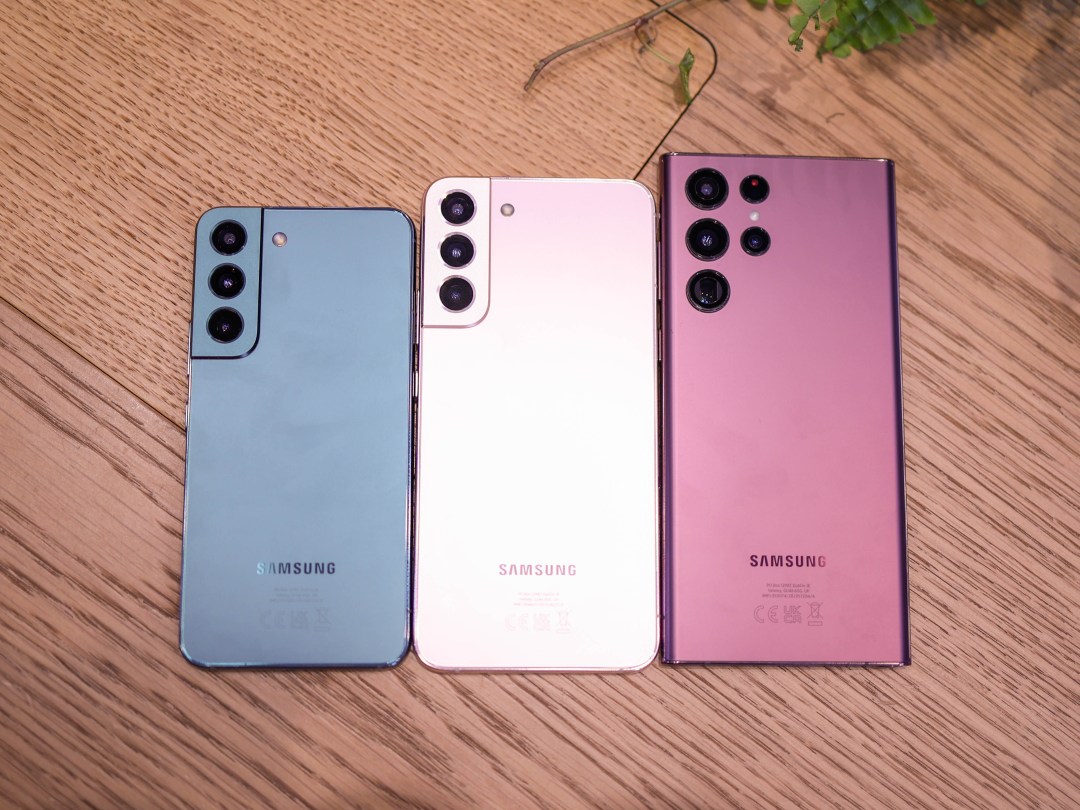
Samsung took the wraps off its latest and greatest set of flagship smartphones this week, unveiling some impressive handset innovations in the form of the Galaxy S22, the Galaxy S22+ and the hardest to hold out of the three, the Galaxy S22 Ultra.
At a glance, each of the handsets brings some welcome enhancements over last year’s flagship Galaxy range, but what are these exactly – is it worth an upgrade if you’re already the proud owner of a Galaxy S21? And if you’re in desperate need of a new phone, which of the three new Galaxy handsets should you go for? That’s what we’re here to find out so let’s take a look…
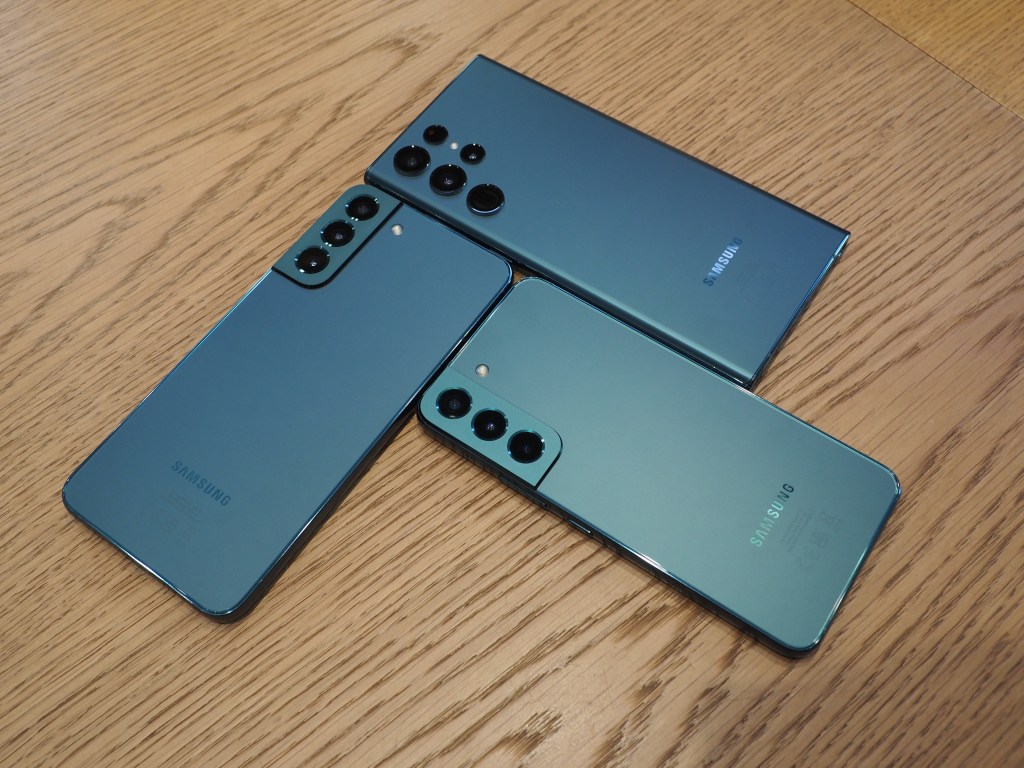
Design: Glass pass
One thing Samsung’s latest smartphones have in common is that all three models make use of glass on both the back and front of their casing, built on top of an aluminium frame. And that’s not just any old glass, it’s Corning’s super-tough Gorilla Glass Victus Plus, which should ensure the phones are well protected against cracks and smashes when dropped.
Another big improvement over the S21 is the noticeably more compact form factors of the S22 and S22+, with both devices now boasting the same-size screens but with a smaller border around the edges, which – must we add – is the same on all four sides. We highlight this as previous Galaxy devices were designed with a slightly bigger bottom bezel called a “chin”. The result is a much sleeker and pleasantly proportionate design.
As for the S22 Ultra, this new smartphone’s design has evolved to become a true Galaxy Note replacement, with squared-off edges and a curved screen that is clearly inspired by the now-discontinued model.
Design-wise, everything else is pretty much the same across the three handsets, with each model sporting IP68 water and dust certification which will ensure they are not only protected from the elements but – according to Samsung – can survive for up to 30 minutes in 5ft-deep freshwater. So no, not underwater pool selfies for you.
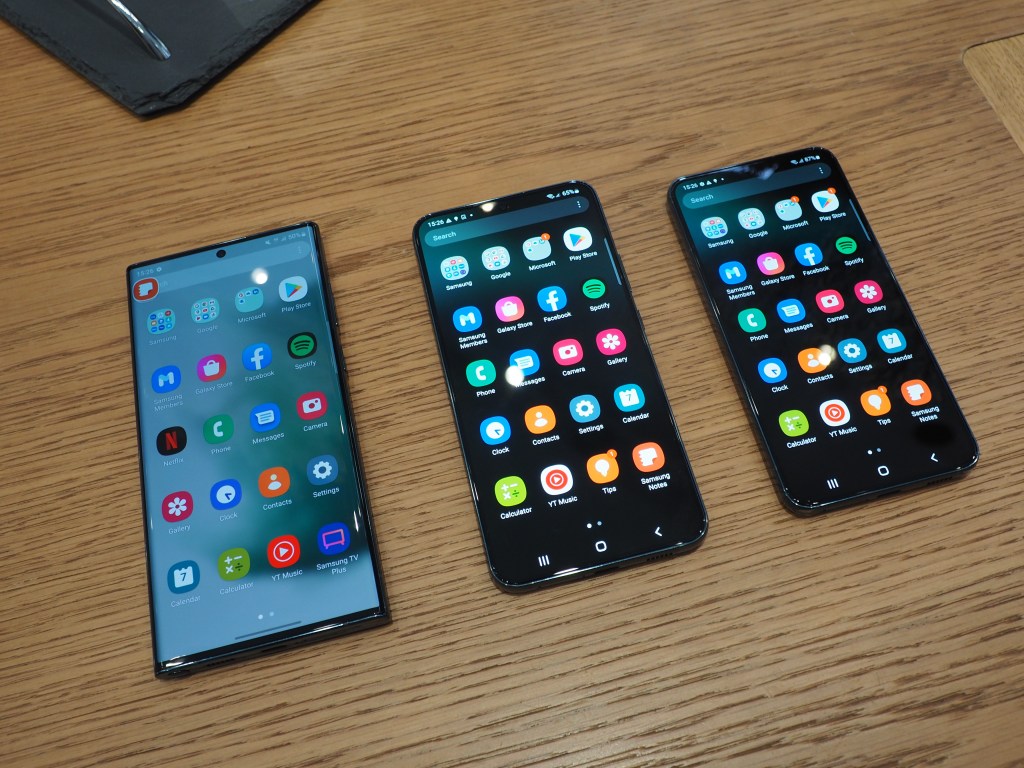
Screen: Size is everything
Each of Samsung’s new Galaxy models can be differentiated by the size and pixel count of their screens. Obviously, the biggest and most premium out of the lot is the Galaxy S22 Ultra, featuring a whopping 6.8-inch Dynamic AMOLED 2X slightly curved panel with a QHD+ resolution and a blazingly-fast 120Hz adaptive refresh rate.
Side note: an adaptive refresh rate means that the display will alter its refresh rate depending on what you’re watching, be it movies or jumping between apps. It will use a higher rate to keep everything running smoothly during video playback, for instance, and lower the frame rate when reading text or scrolling social media to save the battery.
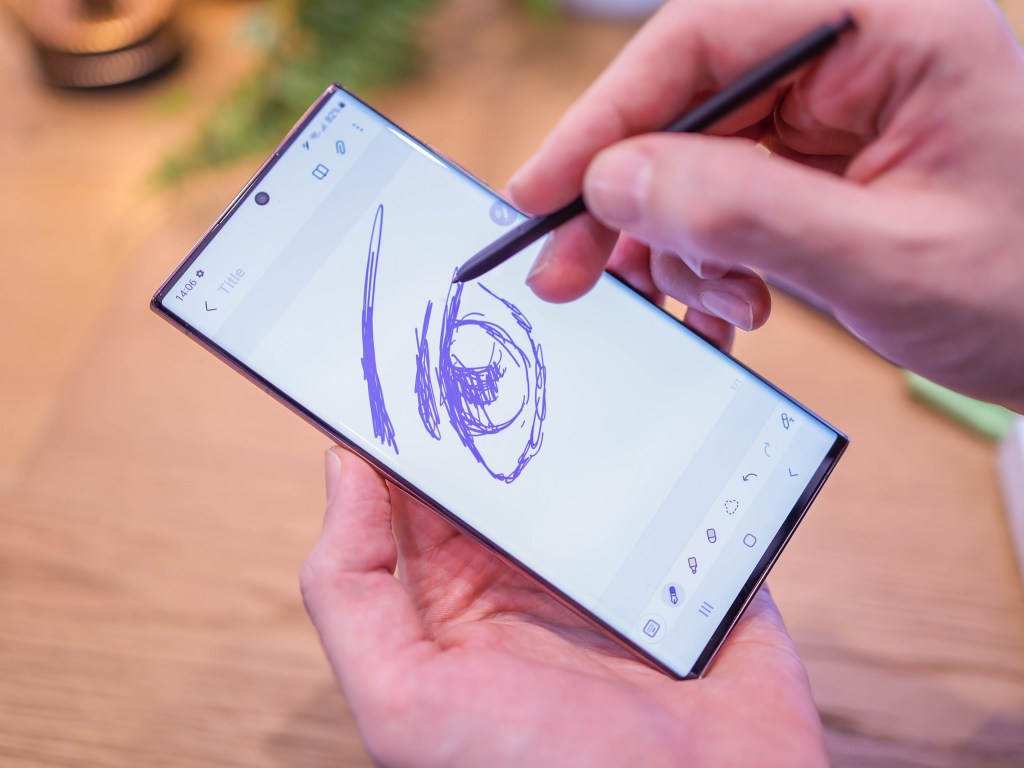
The S22 Ultra also boasts a tech called Vision Booster, which ensures the screen is visible in any lighting by offering an almost-blinding brightness level of 1,750nits, the highest on any smartphone (apparently).
As for the Ultra’s siblings, the Galaxy S22 sports the smallest screen out of the trio, with a 6.1-inch display, whereas the Galaxy S22+ hits the sweet spot with a slightly larger 6.6-inch panel. Both of these also offer Dynamic AMOLED 2X screens touting a 120Hz refresh rate, although they are flat unlike the curved panel on the Galaxy S22 Ultra and fall short of the QHD+ offering with an FHD+ resolution.
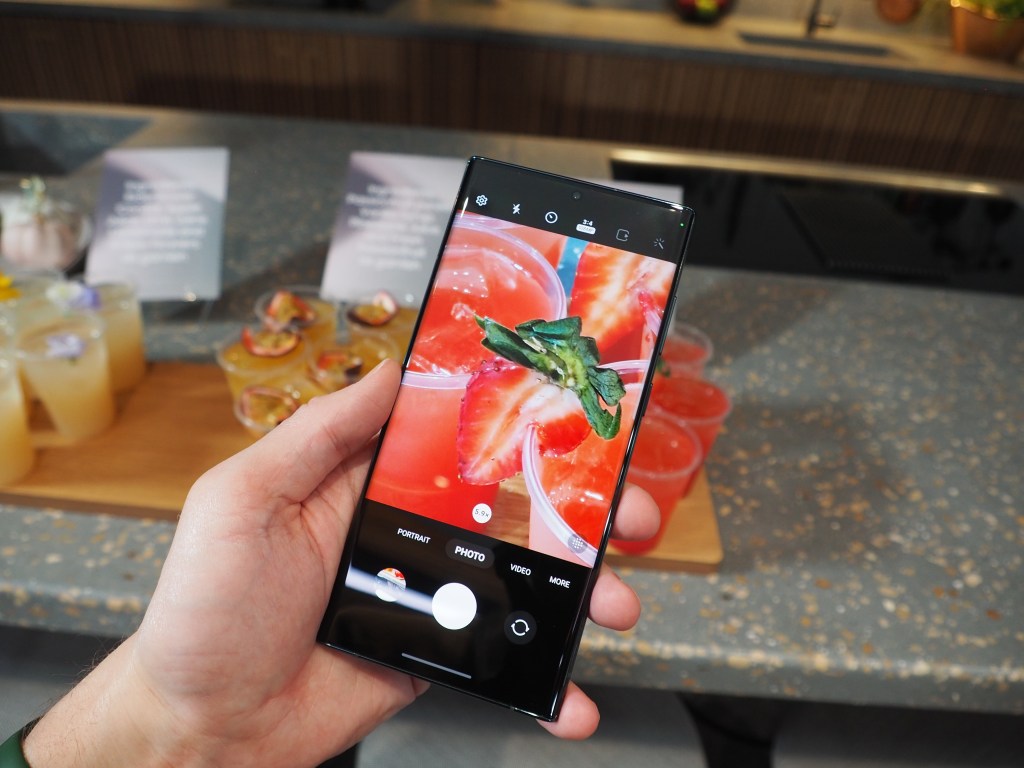
Camera: Trio or quad?
You can see just by glancing at the camera systems on the three models that the S22 Ultra is on another level when it comes to photo-snapping and video-taking abilities, touting an extra lens over its smaller siblings. Camera specs can be pretty confusing, especially when comparing them across three different phones, so let’s break it down.
First off, let’s make things easier by clarifying that the Galaxy S22 and S22+ both feature the same triple-lens rear camera setup, boasting a 12-megapixel ultra-wide sensor with an aperture of f/2.2 and a 120-degree field of view. Joining this is a 50MP wide camera that has an f/1.8 aperture, alongside two 10MP telephoto cameras, one with a 3x optical zoom and one without.

On the front, both the S22 and the S22+ have 10-megapixel snappers with an f/2.2 aperture.
As for the S22 Ultra, you get a quad rear camera setup, consisting of a 108-megapixel main sensor with an f/1.8 aperture, a 12MP ultra-wide sensor with f/2.2 aperture, and two 10MP telephoto lenses – one with an f/4.9 aperture and 10x zoom, the other with f/2.4 aperture and 3x zoom. This zoom can go up to 100x digitally.
The Ultra’s front camera also improves on the Galaxy S22 and Galaxy S22+, with a 40-megapixel lens sporting an f/2.2 aperture.
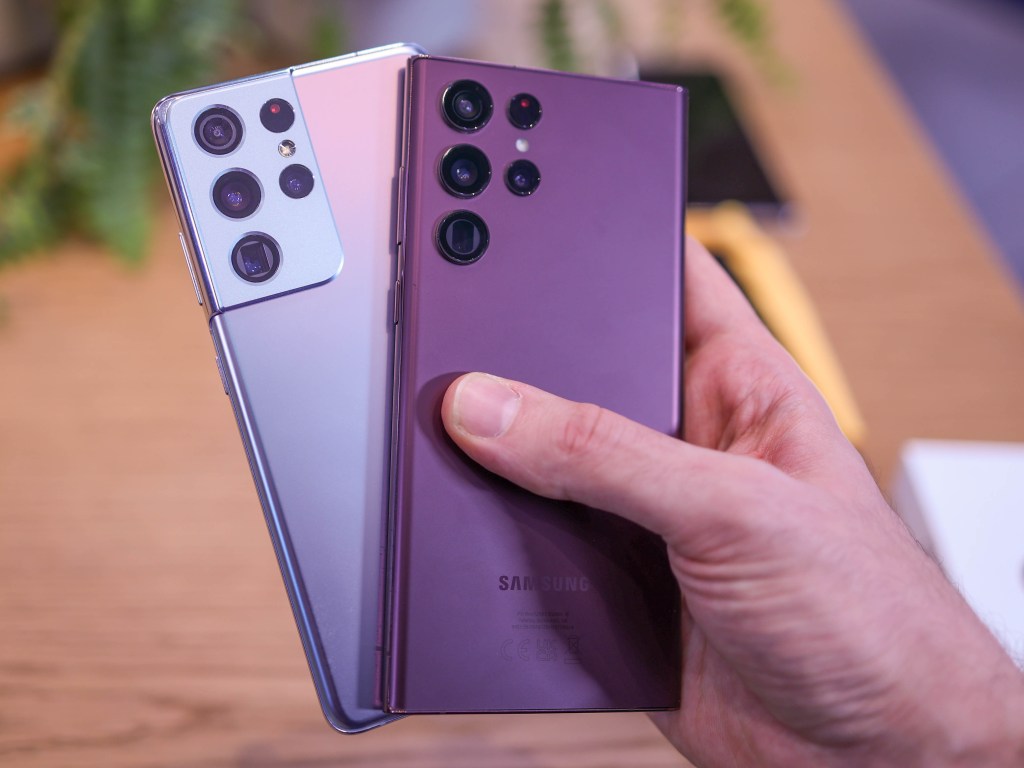
Performance: hard to say
It’s far too early to say what the performance will be like from the three phones, especially since we haven’t had our hands on them yet. This will be something we delve into during our full stand-alone reviews, so stay tuned for those. However, it’s clear that the Ultra will be quite the powerhouse when it comes to powering up intensive apps and games.
One thing to note, however, is that Samsung will be offering different processors in its entire S22 series depednign on where you’re based. While the States will get a Qualcomm Snapdragon 8 Gen 1 processor, the UK and Europe models will ship with a Samsung-made Exynos 2200 processor. Qualcomm obviously has a better resume here, but we can’t image the difference will be too apparent.
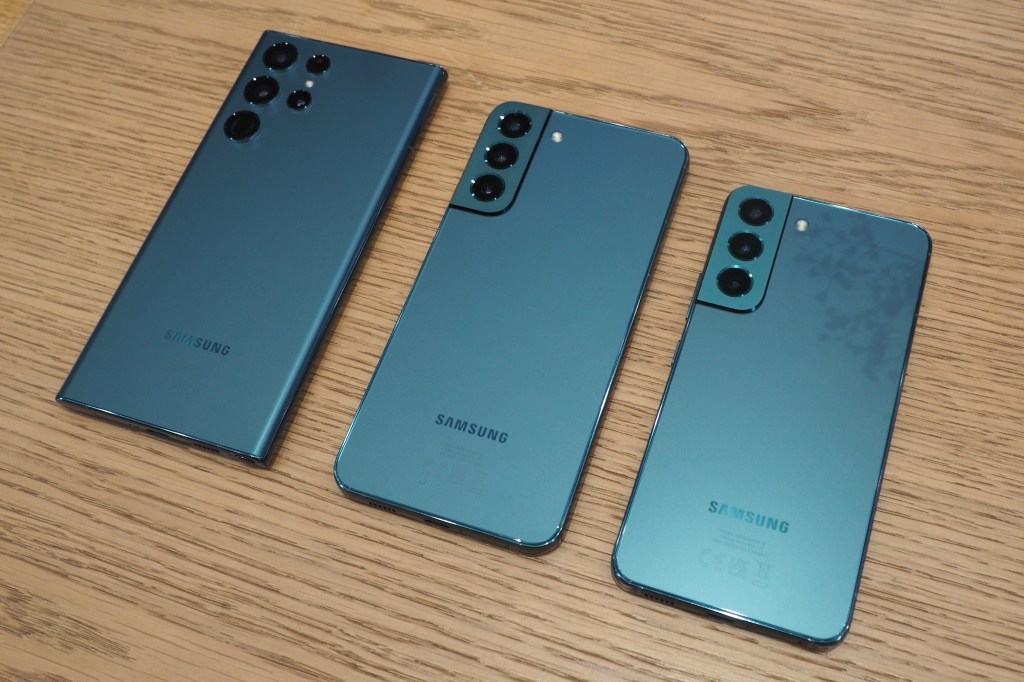
Pricing and availability: budget permitting
While we don’t know exactly when the Galaxy S22 lineup will hit the helves, we do know what the pricing will look like. As you’d expect, different configurations and storage options come with different price tags.
For the standard Galaxy S22, you have two variations, £769 for the 128GB storage version or £819 for the larger 256GB option. The Galaxy S22+ comes in the same two storage variations, but due to its bigger screen will xet you back a little more, costing £949 and £999, respectively.
Finally, the most expensive Galaxy S22 Ultra has the most variations, coming in 128GB, 256GB, 512GB and 1TB options. Prices for those come in at an eye-watering £1,149, £1,249, £1,329 and £1,499, respectively.
As for the available colour options, the Galaxy S22 and S22+ can be purchased in Phantom White, Phantom Black, Green, Pink Gold, whereas the S22 Ultra will be available in Phantom White, Phantom Black, Green, Burgundy.
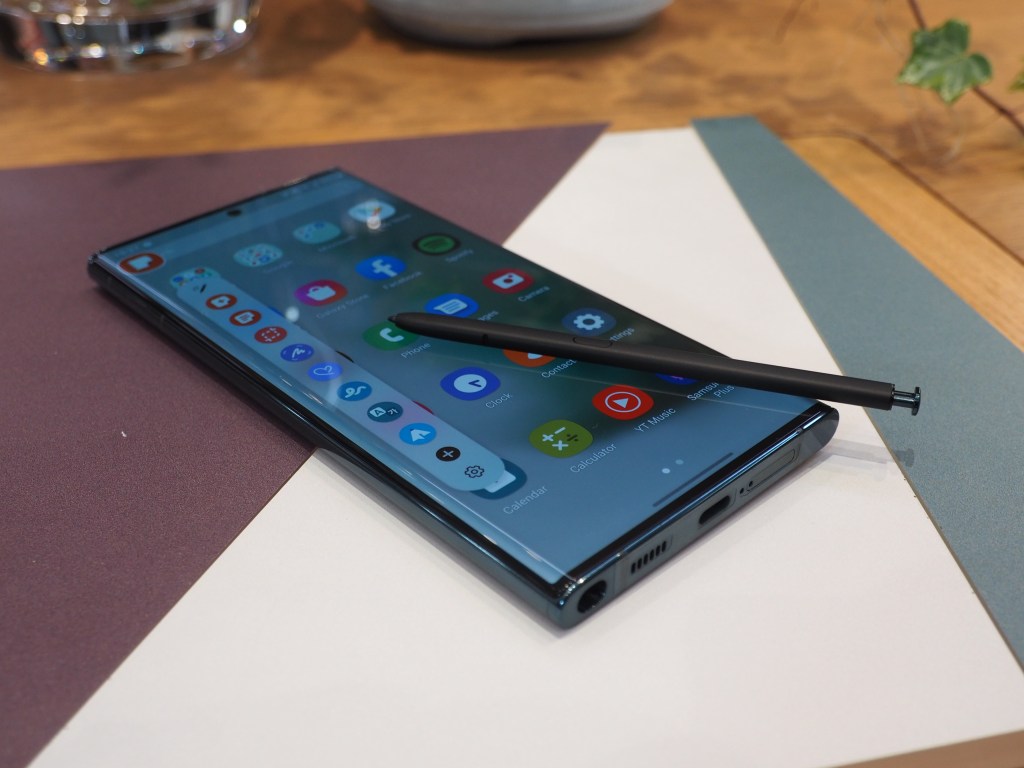
Initial verdict: which to pick?
So which, out of the three new Galaxy devices should you go for? Well, it all comes down to what you’re looking for in a smartphone and the amount of cash you’re willing to spend. Sorry to be boring!
As we’ve established above, the Samsung Galaxy S22 and Galaxy S22+ are very similar phones – they have the same screen resolution, camera configuration, and performance capabilities. The only major difference – other than the price – is that the Samsung Galaxy S22+ has a significantly bigger screen and battery. That doesn’t mean it’s going to last longer, either. Bigger screens require bigger batteries, so you’re likely to get the same performance from both phones. You’re basically just paying for a bigger display in the Galaxy S22+.
The Samsung Galaxy S21 Ultra, however, a totally different beast. Beyond being the biggest and priciest of the three, it has much more compelling camera setup, a higher resolution screen that’s just stunning, and then support for the S Pen stylus which essentially makes it a Galaxy Note. The downside here, of course, is the price. You might get a lot of extra innovation in one handset, but you’re going to have to pay for it. Almost £500 more than the lowest-priced Galaxy S22, to be exact. Ouch.


